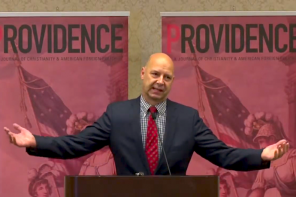More and more, serious business is being done through Twitter, a Web site with a most unserious-sounding name. On Twitter, you tweet out a tweet, which everyone who is following your tweets can see. True to the name and its accompanying noun/verb, the site’s architecture seemingly confines it to the trivial. Every tweet must be under 140 characters (which this paragraph has already long exceeded). Even its built-in instructions emphasize triviality—“what are you doing?” Yet, despite every indication that this is a place where unserious ephemera alone should go, people keep insisting on doing serious things there.
Just this past week, in the former Soviet republic of Moldova, activists used Twitter to organize actions like seizing the office of the president and the parliament. A few months ago, when Israel was conducting its military campaign in Gaza, the Israeli consulate in New York hosted a Twitter press conference about it all, which included such profound reflections as “y Hamas launch missiles not peace?” It seemed like a strategy precisely calibrated to, in the eyes of the audience, minimize the seriousness of a serious event.
So what about the Twitter Passion Play that Wall Street’s Trinity Church conducted on Good Friday? Is this yet another stab at the seriousness of the sacred text, and no less at the most hallowed moment of the Christian narrative?
“If you look in the scripture,” explains Linda Hanick, Trinity’s VP of communications and marketing, “the last words of Jesus are almost written in tweets, less than 140 characters.” Okay, so maybe they’re a match made in heaven.
It all got going around 12:10 p.m. on Friday, ten minutes late, after some technical troubles. The first post: “via @ServingGirl: is so tired. Caiaphas and the priests have been up all night questioning a man who claims to be the Messiah. And I wait on them.” Yes, the text itself was under 140 chars, but with the “via @ServingGirl:” part it went a bit over. By 1:27, a few such posts prompted “@jgderuvo” to shout out, for all watching twspassionplay’s Twitter page to see, “Guys, stay within the 140 character limit… it’s truncating, ruining the effect!” It’s basically the equivalent of someone standing up in the theater and shouting that the script wasn’t in perfect iambic pentameter.
Every few minutes until a bit after 3 p.m., a new tweet arrived. At the start, just under 1,000 people were following. By the end, closer to 2,000. Attendees’ names included the likes of Church-in-the-Garden, Miller Funeral Home, bitterperl, plus lots of regular folks. There were six characters in the play, each speaking from a separate Twitter handle, acting out the story of Jesus’ torture and death.
Save a handful of exceptions (“bad feeling about this”), they used complete sentences. There were few lapses into Twitterish, that dialect descended from instant messaging of old (“lol,” etc.), distinct from cell phone text messaging only by the inclusion of tinyurl hyperlinks.
The main feature of my experience of following the “service” was multitasking. Over the course of the three hours, I watched a lecture by Jared Diamond about the social functions of religion, cleaned up my kitchen, and did some transcribing for work. It allowed me, as Paul of Tarsus almost said, to check my e-mail without ceasing. Yet I did use it as an excuse, as Linda Hanick said it absolutely should not be, to bow out of going to an actual church that day. In fact, Trinity had a real, live, traditional Good Friday service going on at the same time.
Probably more than the play itself (I already knew the story), what grabbed me was the unexpected audience interjections. Innocently: “via @comjudiamurcia: hi from the jewish community in murcia spain.” And, not so innocently, apparently as a result of all the trouble Jesus was putting his girlfriend through: “@marymagdalene: DTMFA.” “What’s DTMFA?” somebody made the mistake of asking, and got this answer: “via @rotinknee2: you dont want to know what DTMFA means its very vulgar if you must check the urbandictionary.com.” Hush up in the peanut gallery, please.
There was standing ovation, too. “via @rphtweet: Thank you! God bless you! That was wonderful!” And: “via @rphtweet: Thank you again. Tweeting is a great way to share the Gospel!” For my own part, having barely paid prayerful attention to any of it, I wish I had sat through an exhausting church service. Humpf. The adulation made me feel like a crotchety old reactionary.
Look, I know Derrida called us out on the whole idea of metaphysics of presence, questioning the possibility of really being somewhere, or of somehow possessing an event in any immediate way by being present at it. A virtual encounter, therefore, is no less real than a “real” one. Still, there’s a phenomenology of bandwidth to be considered. 140 characters every few minutes just wasn’t enough to compete with all the other wonderful distractions that hanging around my apartment with my computer can offer. Show me what you’ve got was my attitude to the play. Show me why I’m doing this rather than going to the actual service at my local church a few blocks away.
But writers with time to kill are not the kind of people Trinity Church is after with the Twitter play, according to Hanick. They want to reach the folks who would love to go to a service but can’t, who have to run around frantically all day with nothing but a Blackberry and imagination available to mark this most solemn day, which our busy world rarely cares to pause for. For someone like that, 140 characters of the gospel every few minutes could be serious business.




